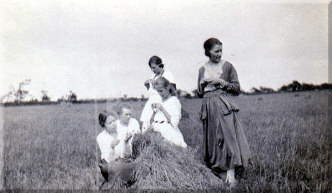Meal preparation in the early days of the county consumed more of the family’s time and energy than we can imagine today. Certain foods were natural to the area and were picked in season and some such as hickory nuts, black walnuts, hazelnuts and chestnuts could be saved all winter. Wild berries were plentiful. Wild strawberries, raspberries, blackberries and elderberries provided a treat in the spring and summer. Such delicacies as strawberry shortcake, berry pie and cobbler are still favorites.

Every home had a least one gun for protection and hunting. Venison, wild turkey, squirrel and rabbit together with fresh fish could round out a meal.
Corn was the most versatile dietary ingredient. Corn meal in many forms was the basis of most meals. It was used for Johnny cake, corn pone, and boiled to make mush which was eaten with meat gravy. Cold mush could be fried and eaten with syrup or honey. Once gardens were planted, the family’s diet included potatoes, squash, cabbage, rhubarb, turnips, and grains for flour.
Farmers began raising pigs for meat, cows for milk and beef, chickens for eggs and Sunday dinner. Bread was an important part of every meal, but making yeast bread was a time consuming prospect in the early 19th century. The yeast had to be made at home, the bread had to rise for several hours, oven baking required time to pre-heat the oven. Ovens were not regulated so bread could not be put in the oven and left to bake without constant checking on it.
Food preparation was a family affair. Meat had to be cured and smoked. Jellies and jams had to be made. Apples and pears were picked, peeled, cored and dried. Apple butter had to be made, cabbages, potatoes and turnips were buried to prevent freezing. Nuts were hulled and stored.
Tea and coffee were rare and expensive. Tea was made from sassafras roots or other herbs, and a coffee-like drink was made from a variety of including wheat, barley and rye. There was also homemade cider, wine and other liquors. This restricted diet, without access to essential vitamins and minerals in the winter often led to many diseases such as rickets and pellagra and contributed to the high mortality rate of the period.
